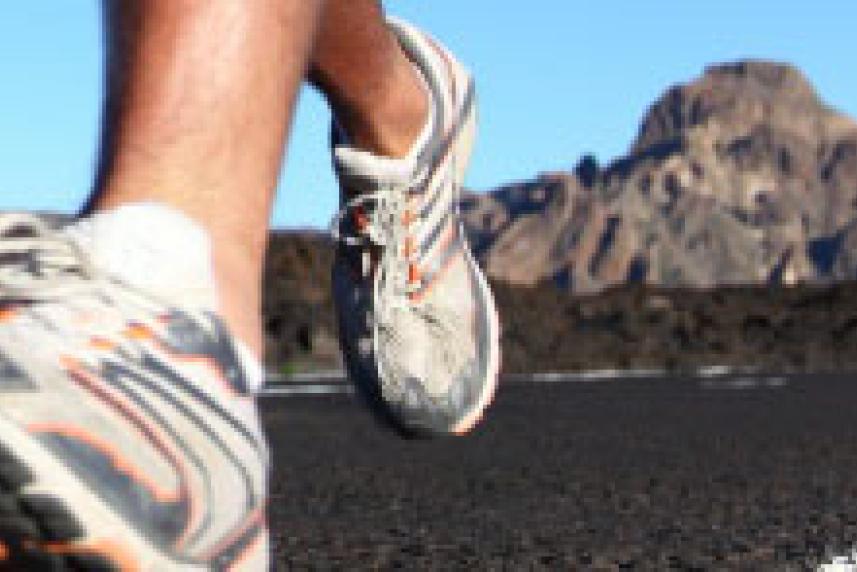What you can learn from your sneakers
Get to the bottom of bad running form.

Sneakers are like tires. When the tread is gone, it's time for new ones. The tread on the bottom of your running shoes can tell you more than just when it's time for a fresh pair, though. Inspecting where the tread is worn the most can help you check your form, says Greg Zuckerman, a footwear buyer for City Sports, a fitness apparel and equipment store in Boston.
Good running form means you have good posture, knees slightly bent and land first on the middle-to-front part of your foot (below the toes but before the arches). This way your calf muscles absorb the shock of the running surface, says Zuckerman. Muscle can handle the track or pavement much better than your bones and joints.
The bottom of your sneakers where the rubber meets the road is called the outsole. Your outsole has various bumps all over it for tread so you can speed up, slow down and generally run where you intend to run.
To inspect your shoes:
- Flip them over and get almost eye level with the outsole so you're looking from heel to toe at the bumpy landscape that is the tread.
- Draw an imaginary line down the middle of the outsole from heel to toe. Give the half that supports your inner foot and arch a look. Does the tread look smoother than the other half of the shoe? You're probably over-pronating, a fancy way of saying you're running flat-footed, says Zuckerman.
Flat feet happen when your arch collapses while running. It can make your feet roll inward, something many people mistakenly blame on poor ankle support. It's also the main reason people feel shin splints, Zuckerman says.
If you're running flat-footed, you can buy a shoe with more arch support, but you can also work on strengthening your arches. Do arch raises while you're sitting at your desk or watching TV. Raise the arch of your foot without curling your toes or letting your big toe leave the ground. When you run again and your calves feel sore, it's actually a sign your arches are getting stronger, Zuckerman says.
- Now, draw an imaginary line across the shoe to divide the toe from the heel. Check out the heel. If that part of the shoe's tread is worn the most, you could be heel striking, meaning your heel is hitting the ground first, says Zuckerman.
Heel striking can happen if you're leaning slightly backward, if you're over-striding, or both. It can also mean pain in your knees and back. Your knees are locking and sending pain straight up the legs to the back.
If you're heel striking, adjust your posture by standing nice and tall and then leaning slightly forward instead of backward. Leaning forward will unlock your knees and have you landing on the front of your foot instead of your heel. Make sure your feet land directly under your body instead of ahead of your body to keep from over striding.
Talk to your doctor before beginning a new exercise program.


